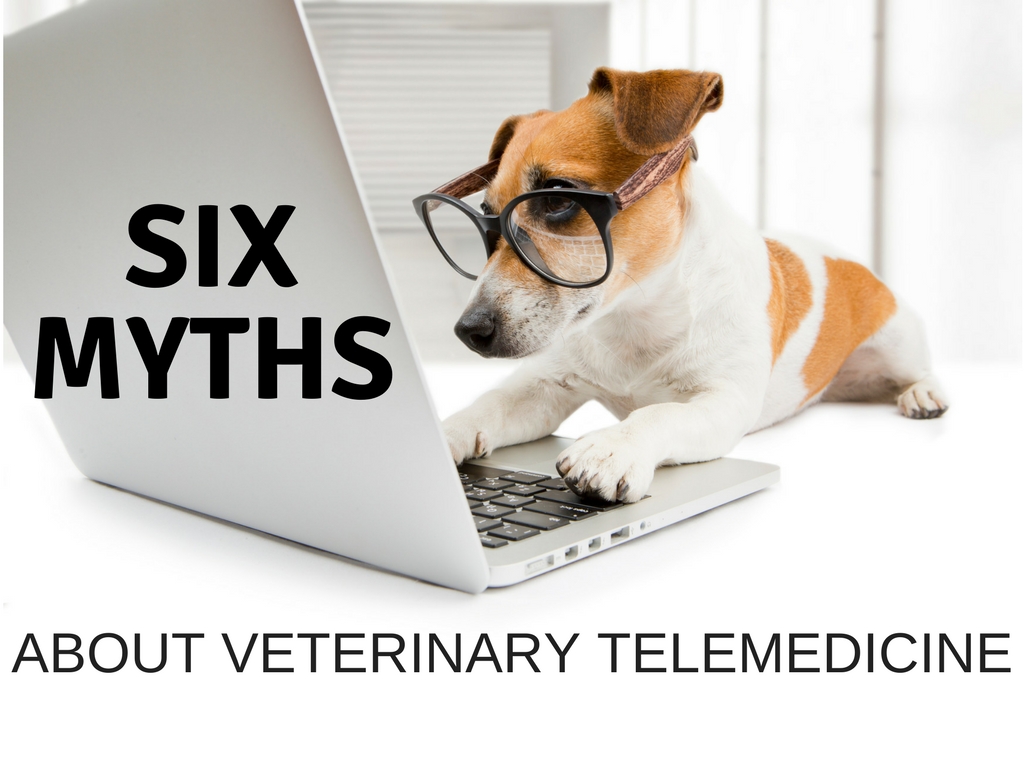The very first time I used my insurance program’s telemedicine service to call and get a prescription for a minor problem that nonetheless couldn’t wait for Monday, I had two thoughts:
- This is awesome (Friday night at the ER is no bueno).
- I wonder when this is going to be a reality in veterinary medicine.
This was, hmmm, maybe 2015 or so. I asked the people around me what they thought and they all laughed and said it was never going to happen, just like they said to me in 2010 when I was talking about social media and we all know how that went.
The world of veterinary medicine is paying more attention now, but they’re doing so not with enthusiasm but with fear: This is going to be a mess. We’re going to miss so many things. It’s going to hurt pets. If only we knew how this was going to play out so we could prepare. You know, the usual response to change.
We know how it’s going to play out. There is no ambiguity to this. Telemedicine is going to happen. If we implement it well, it is going to be great for both veterinarians and pet owners. If we ignore it, someone else is going to implement it, and maybe they’ll do it well, maybe not. As a bona fide field of Type As, it’s astounding to me that veterinarians aren’t more involved in determining how this all develops, but that’s ok. It wouldn’t be the first time this industry was slow to adopt new technology.
For the past few months, I’ve steeped in the concepts of telemedicine. Swam. Swanned. Immersed. It is, without a doubt, one of the most exciting things I’ve seen in my career. I’ve also been listening to the Hamilton soundtrack over and over and I’m pumped. So here’s a few myths I’m ready to bust:

Myth 1: Telemedicine can’t work in this field because our patients can’t talk.
Fact: Neither can babies, yet our colleagues in human medicine made it work. This is the important thing to remember: There are many cases where telemedicine is not appropriate. There are quite a few where it might be. Here’s the key question: Who gets to determine which is which? If we grab a seat at the table, veterinarians do. Human healthcare call centers are well regulated in what they can and cannot help with and do not hesitate to tell someone that they need to go to the ER. Telemedicine was never meant to entirely replace in-person exams.
Myth 2: People are going to get mad when they don’t get a diagnosis over the phone.
Fact: The truth is, there will be lots of times we can’t make a diagnosis without an exam, even when telemedicine becomes legal (note I said when, not if). That’s OK. Right now it’s perfectly legal for someone to give advice and guidance over the phone as long as they don’t diagnose or prescribe. It’s like Dr. Google, except with good advice instead of “canned pumpkin will fix that right up.”
Most people who call into call centers don’t want a definitive answer. They want to know what they should do next and if they need to go to the ER. This is hugely helpful information. When my kids were little, I asked for guidance all the time to that effect every time they spiked a fever: I don’t want to go in if I don’t have to, but of course I will do what is right for my kiddo. People want guidance, not answers. Which leads me to:
Myth 3: We’re doing just fine on our own, thankyouverymuch.
Fact: When someone calls a clinic or an ER unsure whether or not they should come in, what do they get told 95% of the time? “If you’re uncertain, come in. Better safe than sorry.” This is true, and is absolutely the right thing to do from the perspective of the hospital, who is trying to cover their butts. The result? A bunch of irritated people sitting in the ER at midnight for something that could have waited until the next morning. An ear infection sitting in the packed lobby for three hours as they get bumped over and over for hit-by-cars and BDLD (big dog/little dog.) You know, true emergencies. Then they get mad at the ER for (as they must) charging ER prices for non emergency problem. Then they complain on social media. Who wins here, really?
On the flip side, there are also plenty of cases where someone doesn’t think their pet needs to be seen right away when they do. Take for example the classic case of the “constipated” cat who turns out to have a urinary blockage. What hospital has the time to train every single person who might answer the phone as to how to triage those things? How many times has someone said, “sure, come in” but missed the clues that escalate something from ‘tomorrow’ into ‘right now?’
Myth 4: There’s no way a remote call center can appropriately triage a pet they’re not familiar with.
Fact: Yep, they can. Nurses do it all the time. If you put hundreds of hours of work into training people, running your questions and processes by teams of veterinarians, putting quality assurance and reviews into place, they can. You all have known me for long enough. I wouldn’t say it if I didn’t believe it. It’s not only more convenient, it’s better advice much of the time.
Myth 5: Pet people will never use this.
Fact: They already are. This is one of those cases where our clients are ahead of us in the game. Non-vet readers, here’s a question: let’s say your pet had a surgery incision and you thought it looked a little weird- not gaping, not bloody, just…a little off, at 10 pm. Your SO is out of town and you have two sleeping toddlers. Would it be valuable to you to talk to a vet who knows how serious that could be and could explain why you should or should not grab your sleeping kids and go in? Would that be helpful?
As of now, no veterinary medicine telemedicine group is offering diagnosis over the web, because it’s not yet legal in most states. Advice and triage is another matter. That will change, mark my words. Regardless of whether we think it’s right for the profession, this is right for our clients, therefore it will happen. My belief is that we can do it in a way that is good for both.
Myth 6: No one knows how this will work.
Fact: I’m not sure if anyone has noticed, but while we’re here pondering and fretting, our colleagues in human medicine have made some tremendous inroads. Could it be they might have some insight? Zoobiquity. One Health. We keep forgetting the other exists.
We Need a Few Good Vets to Rise Up
As part of my mission to do the hard things, I’m going out of my comfort zone and heading to the American Telemedicine Association Conference in Chicago at the end of April, where our colleagues in human medicine are light years ahead and can offer a tremendous amount of guidance as to how we can get with the program responsibly and ethically. I am honored to have been chosen as one of the inaugural ATA Connectors as an ambassador from the field veterinary medicine.
I plan to come back to my conferences like Marty McFly comes back to 1985 after seeing what 2015 has in store. People of human medicine! We need your help!
If you’d like to go, and I know some of you would because sometimes you just wanna do something a little revolutionary, use my coupon code VOGELSANG15 for a discount on registration. Then use that money you saved to raise a toast to the revolution! Veterinarians- we get the job done.
And if you want a peek at the company I’m working with, it’s whiskerdocs. The entire library of medical content, toxin guides, and wellness information is available to anyone. We’re working on some big stuff, and I can’t wait.






